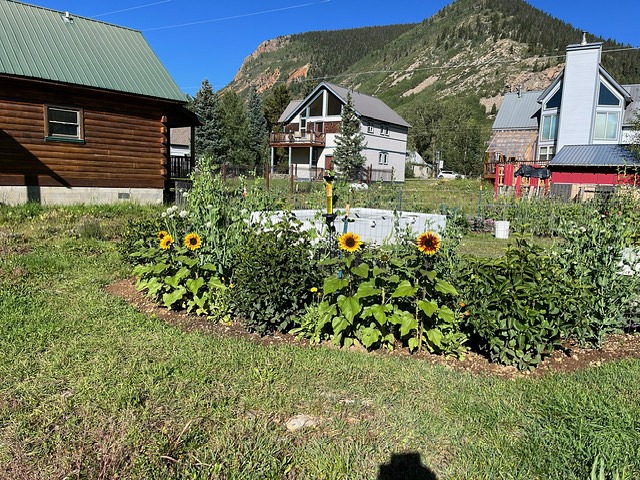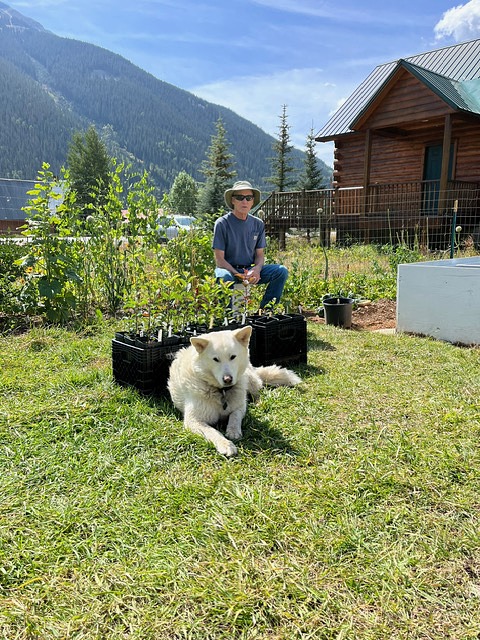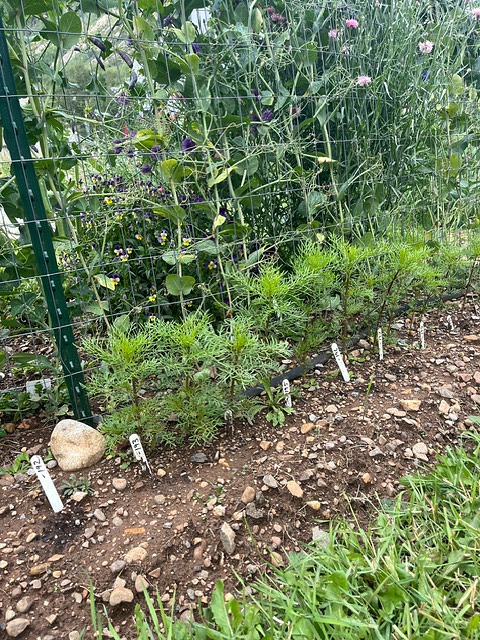Hope and Practice
To celebrate Seed Savers Exchange's 50th anniversary, we are featuring the work and inspiration of Exchange listers in the "Hope and Practice" series.

Terrence Kerwin, Seed Savers Exchange member, reflects on how he first became involved in the Exchange and why he lists seeds on it.
I would guess that I’m an unusual member of Seed Savers Exchange, though probably everyone thinks that! I’ve been an SSE member since about 1980, but I didn’t join the Exchange until three years ago, when I offered two tomato varieties, ‘Alaska’ and ‘Siberian.’ My unusual aspect is that I live and garden in Silverton, Colorado, at 9,318 feet in elevation [USDA Hardiness Zones Map]. It is a challenging place to garden, and that’s what makes it fun.

I became an SSE member to access to other gardeners’ information about what I could grow here. I got advice and seeds from numerous people, but few things worked well enough to offer seeds myself. Barbara Carlson, an Exchange lister in Alaska offered the final piece of advice that did the trick. In a nutshell, she pointed out that growing plants successfully in tough climates wasn’t the result of magic seeds; it was, instead, due to using things like cold frames and row covers. Once I listened, I was able to grow things much more reliably. I listed eight varieties on the Exchange in 2024 and fully expect to double that in a year or two.
As much as I understand the need to keep these plant varieties going, I have not found any magic seeds that will grow here and produce fruit or seeds without a little help. To me, the other side of the SSE is the people involved and their willingness to offer help. Back in the early 1980s, I was given seeds by numerous people—most of whom have probably passed away. When we think of preserving seeds for “future generations,” we (I, at least) tend to forget that we have been that “future generation” to so many people who saved seeds before us. They are long gone, yet their legacy of seeds is still with us, alive today and hopefully into the future.

I feel the need to mention global climate change and how the gardeners of the world might react. Genetics is not static over time. We try to keep our seeds “pure,” but they never are the same year to year even if just by random mutation. This is a good thing when considering changes in climate. Whatever seed is saved will slowly respond to climate changes and will roll with the punches (perhaps not the best phrase). It has been doing this for thousands of generations. The history of grain crops and how they’ve changed over millennia is enough to make you rethink keeping your seed “pure.”
Most of us have developed landraces of crops [a locally adapted variety of a plant that has evolved over time] whether we intended to or not. I have intended to grow whatever I could. Unfortunately for me, I really am not fond of the root crops and most of the greens that produce here. So, I focus on the crops I enjoy such as snap peas and snow peas. I’ve not achieved much other than having plenty to eat. …We have three apple trees that produce, barely, and they are old trees. I’ve enlisted the help of others in SSE to round up seeds of apples likely to grow here.
I think I’ve always been a gardener, but the seed-saving side of the interest has little to do with the harvest. It is driven by wanting to be a part of the natural world. I don’t want to just be a taker; I want to be a creator, a giver. That’s part of gardening, growing food from a seed—from almost nothing. For me, this is a good thing.
Terrence Kerwin listed 13 varieties on the Exchange in 2025.
Hope and Practice
To celebrate Seed Savers Exchange's 50th anniversary, we are featuring the work and inspiration of Exchange listers in the "Hope and Practice" series.
|
|||||||||||||||||||||||||||||||||||||||||||||
|
|||||||||||||||||||||||||||||||||||||||||||||
|
|||||||||||||||||||||||||||||||||||||||||||||
|
|||||||||||||||||||||||||||||||||||||||||||||
|
|||||||||||||||||||||||||||||||||||||||||||||
|
|
|||||||||||||||||||||||||||||||||||||||||||||